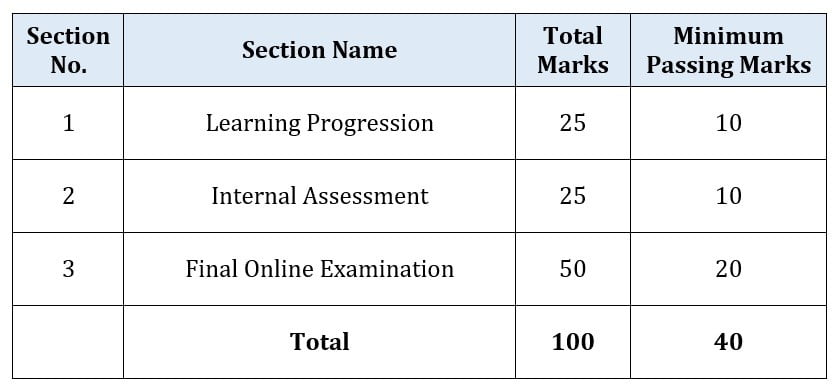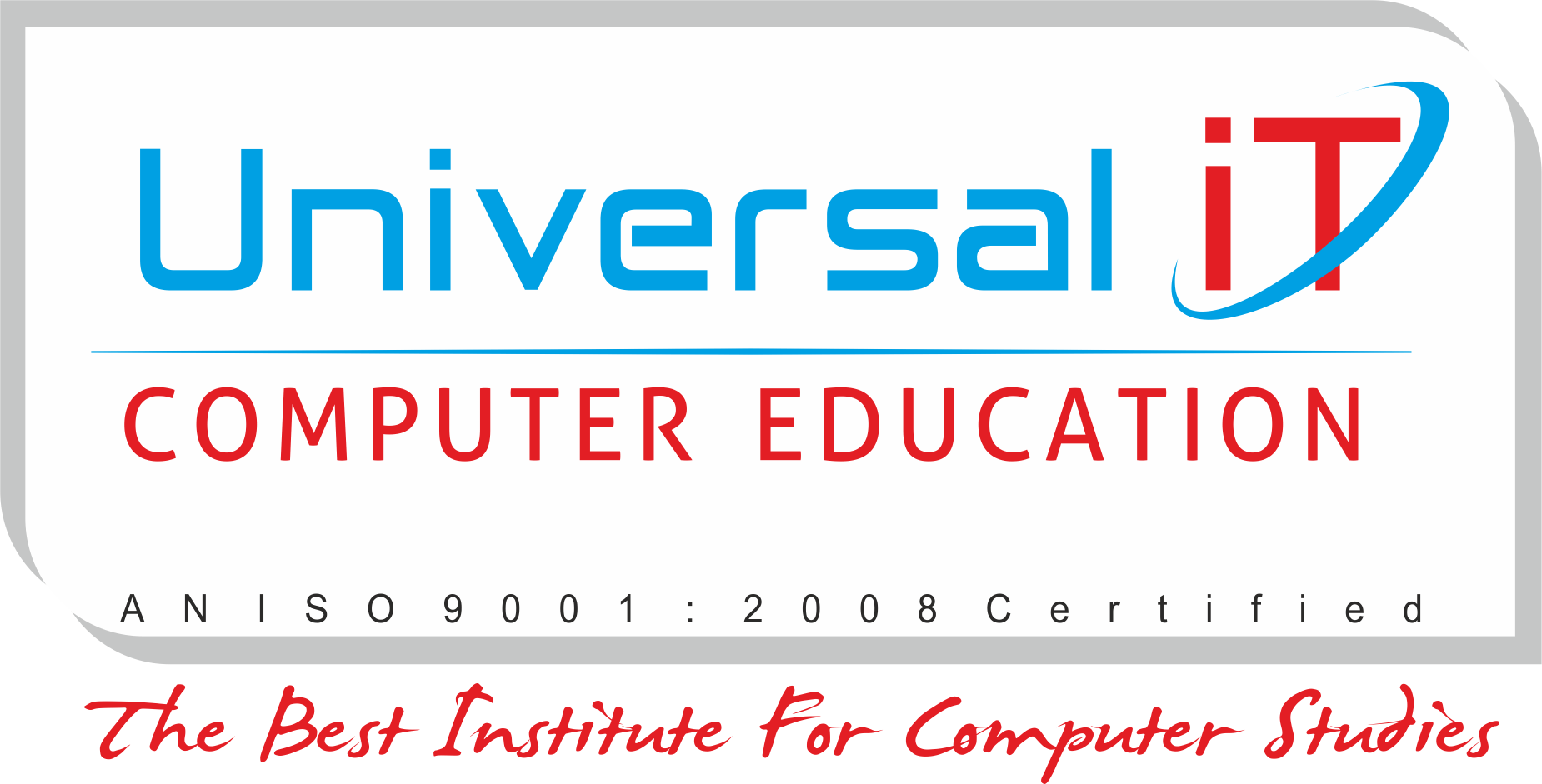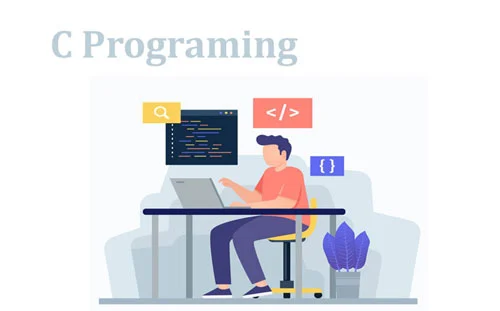C Programing
C is one of the most widely used and user friendly programming language. It is faster than any other programming language. The main features of C language are simple set of keywords, low-level access to memory and clean style.
Learning C programming has lot of advantages:
- You will be able to read and write codes for a large no. of platforms varying for micro controllers to advanced scientific systems.
- If you learn C, learning C ++ becomes easier.
Introduction
Do you enjoy coding? Do you want to build your career in Programming?
Start learning C Programming with us!
This programming language is a widely used and developed to write an operating system. Also, to do application level programming. This is the building block of Computer Technology.
Why take Admission?
This course covers the fundamentals of Computer theories including the flow of a program using branch statements, repetition, nesting of structures, creating and modifying arrays, how arrays are organized in memory.
After completing this course, you can work as a Programmer, Embedded Programmer, System Engineer, System S/W Engineer, Network Security Engineer and Game Programmer.
Certification & Important Dates
Certification
- KLiC courses are recognised by Yashwantrao Chavan Maharashtra Open University (YCMOU).
- MKCL provides certificate to the KLiC learner after his/her successful course completion.
- Yashwantrao Chavan Maharashtra Open University (YCMOU) provides mark sheet to successfully passed KLiC learners (Jurisdiction: Maharashtra).
Important Dates
- Batch Commencement: One batch in each calendar month (January to December)
- Date(s) of Application and Fee Payment by Learner: 1st – 30th day of each calendar month
- Date(s) of Learner Confirmation by ALC: 1st – 30th day of each calendar month
- Course Start Date and Date of Issuing Learner Login: Date of admission confirmation
Academic Approach
The course focuses on practical knowledge and application. The aim is to make the learner efficient and to offer him or her rewarding career.
Learning Methodology
- The participants get the Overview of the course, use of tools and their application in real life
- He or She learns about available career opportunities, roles to be performed at the workplace
- Learner gets to know various parts, functions and inter relations of the tool
- At the Beginner Level, the learner knows the Simple Application Development Technology
- Encourage him or her to develop integral skills required to make them job-ready
Syllabus
1) Getting Started
- Brief Introduction
- Programming Language
- About C Programming
- C Character Set
- Constants, Variables & Keywords
- Constants in C
- Variables in C
- Writing a C Program
- Instructions and Assignments
- Basic Operators in C Programming
2) The Decision Control Structure
- Decisions Control Structure & the If Statement
- The if-else Statement
- Use of Logical Operators
- Different types of Operators
- Points to remember
3) Loop Control Structure
- Loops and the While loop
- While Loop
- For Loop
- Operators in Loop
- The Odd Loop
- Break Statement
- Continue Statement
- Do-while loop
- Tips to remember
4) Case Control Structure
- Decisions using switch
- The Tips and Traps
- Switch versus if-else Ladder
- The goto keyword
5) Functions and Pointers
- About Functions
- Passing Values between Functions
- Scope Rule of Functions
- Calling Convention
- One Dicey Issue
- Advanced Features of Functions
- Function Declaration and Prototypes
- Call by Value or Call by Reference
- An Introduction to Pointers
- Pointer Notation
- Function Calls
- Basics of Call by value and call by reference
- Conclusions
- Recursion
- Recursion and Stack
- Adding Functions to the Library
6) Data Types Revisited
- Data type
- Integer number variables
- Integers, signed and unsigned
- Chars, signed and unsigned
- Floats and Doubles
- Issues related to Data types
- Storage Classes in C
- Automatic Storage Class
- Register Storage Class
- Static Storage Class
- External Storage Class
- To study the Ground rules for the Storage Class
7) The C Preprocessor
- Features of C Preprocessor
- Preprocessor and Macro Directives
- Macros with Arguments and Macros versus Functions
- Various Directives
8) Arrays
- What are Arrays?
- Usage of Arrays
- Pointers and Arrays
- Passing an Entire Array to a Function
- Two Dimensional Arrays
- Initializing a 2-Dimensional Array
- Memory Map of a 2-Dimensional Array
- Pointers and 2-Dimensional Arrays
- Pointer to an Array 295
- Passing 2-D array to a Function
- Array of Pointers
- Three Dimensional Array
9) Pupating on Strings
- What are Strings?
- Pointers and Strings
- Standard Library String Functions
- Two-Dimensional Array of Characters
- Array of Pointers to Strings
- Limitations of Array of Pointers to Strings
10) Structures
- Why Use Structures?
- Declaring a Structure
- Accessing Structure Elements
- Array of Structures
- Additional Features of Structures
- Uses of Structures
11) Console Input/output
- Types of I/O
- Formatted Console I/O Functions
- sprintf( ) and sscanf( ) Functions
- Unformatted Console I/O Functions
12) File Input/Output
- Data Organization
- File Operations
- Opening a File
- Reading from a File
- Trouble in Opening a File
- Closing the File
- Counting Characters, Tabs, Spaces
- A File-copy Program
- Writing to a File
- File Opening Modes
- String (line) I/O in Files
- The Awkward Newline
- Record I/O inFiles
- Text Files and Binary Files
- Record I/O Revisited
- Database Management
- Low Level Disk I/O
- A Low Level File-copy Program
- I/O Under Windows
13) More Issues in Input/output
- Using argc and argv
- Detecting Errors in Reading/Writing
- Explanation
- Standard I/O Devices
- I/O Redirection
- Redirecting the Output
- Redirecting the Input & Both Ways at Once
14) Operations on Bits
- Binay System & Bitwise Operators
- Bitwise AND Operator
- Bitwise OR Operator
- Bitwise XOR Operator
- One’s Complement Operator
- Shift Operator
- The showbits( ) Function
15) Miscellaneous Features
- Enumerated Data Type and its uses
- Understanding with a Program
- Renaming Data Types with typedef
- Typecasting
- Bit Fields
- Pointers to Functions
- Functions Returning Pointers
- Functions with Variable Number of Arguments
- Unions & Union of Structure
16) Under Windows 535
- Uses of Windows
- Integers
- The Use of typedef
- Pointers in the 32-bit World
- Memory Management & Device Access
- DOS Programming Model
- Windows Programming Model
- Event Driven Model & Windows programming
- The First Windows Program
- Hungarian Notation
17) Windows Programming
- The Role of a Message Box
- Here Comes the windows
- More Windows
- A Real-World Window
- Creation and Displaying of Window
- Interaction with Window
- Reacting to Messages
- Program Instances
18) Graphics under Windows
- Graphics fundamentals
- Device Independent Drawing
- Hello Windows program
- Drawing Shapes
- Types of Pens
- Types of Brushes
- Code and Resources
- Freehand Drawing, the Paintbrush Style
- Capturing the Mouse
- Device Context, a Closer Look
- Displaying a Bitmap
- Animation at Work
- WM_CREATE and On Create( )
- WM_TIMER and On Timer( )
- Points to remember
19) Interaction with Hardware
- Hardware Interaction
- Hardware Interaction, DOS Perspective
- Hardware Interaction, Windows Perspective
- Communication with Storage Devices
- The Read Sector( ) Function
- Accessing Other Storage Devices
- Communication with Keyboard
- Dynamic Linking
- Windows Hooks
- Caps Locked, Permanently
- Mangling Keys
- Key Logger
20) Under Linux
- What is Linux
- C Programming Under Linux
- The ‘Hello Linux’ Program
- Processes
- Parent and Child Processes
- More Processes
- Zombies and Orphans
21) More Linux Programming
- Communication using Signals
- Handling Multiple Signals
- Registering a Common Handler
- Blocking Signals
- Event Driven Programming
22) Memory Mapping
- Introduction to Memory Map
- Memory Organization
- Segmentation
- Loading OS & Booting Process
- The resident and transient memory area
- Program memory area at run time
- Memory representation of data & function objects
23) C Traps & Pitfall
- Introduction
- Lexical pitfalls
- Exceptions, String & characters
- Understanding Declaration
- Exceptions in Operators’ precedence
- Use of Semicolons
- The Switch statement
- Calling functions
- The Dangling else problem
- Linkages
- External Types
- Expression evaluation sequence
- Issues related to actual parameters
- Eshew Synecdoche
- Library Function
- Preprocessor
- Portability pitfalls
- Signed & Unsigned characters
- Random numbers
- Portability problems
Evaluation Pattern
Evaluation Pattern of KLiC Courses consists of 4 Sections as per below table:

YCMOU Mark Sheet:Printed Mark Sheet will be issued by YCMOU on successful completion of Section 1, Section 2 and Section 3 and will be delivered to the learner by MKCL.
YCMOU Mark Sheet will be available only for Maharashtra jurisdiction learners
MKCL’s KLiC Certificate will be provided to the learner who will satisfy the below criteria:
- Learners who have successfully completed above mentioned 3 Sections i.e. Section 1, Section 2 and Section 3
- Additionally, learner should have completed Section 4 (i.e. Section 4 will comprise of SUPWs i.e. Socially Useful and Productive Work in form of Assignments)
- Learner has to complete and upload minimum 2 out of 5 Assignments


